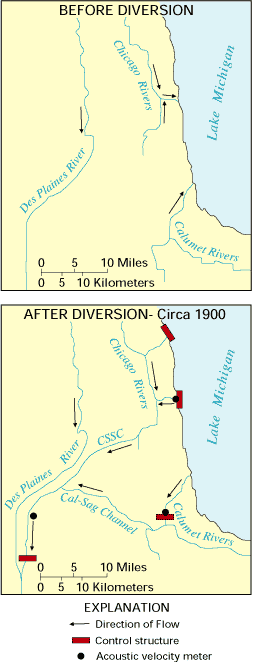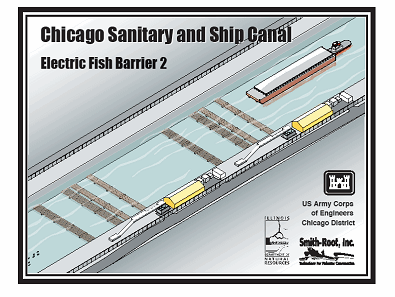Many months ago I posted an article with a somewhat cryptic name, “They Reversed the Chicago River.” The story centered on an early twentieth century engineering marvel that actually changed the direction of a significant waterway. It made sure any sewage from the burgeoning City of Chicago wouldn’t foul the city’s drinking water.
An Engineering Marvel
They named their achievement the Chicago Sanitary and Ship Canal. Thus, they actually switched a watershed from the Great Lakes / St. Lawrence basin to the Mississippi River basin. Water once destined for the Atlantic Ocean via the St. Lawrence River traveled to the Gulf of Mexico instead.

However It Created a Problem
There are downsides when two great watersheds commingle through a series of canals, dams, locks and pumps. When something detrimental happens to one it might be able to impact the other. The Associated Press reports that “Fears mount over giant carp reaching Great Lakes.”
A particularly ferocious species of Asian carp escaped into the Mississippi watershed not long ago. It came from fish farms in the southern United States during flooding in the 1990’s. And those fish have been chomping their way steadily upstream ever since.
It now seems they might be about to breach the Chicago Sanitary and Ship Canal. Unfortunately this puts them on a path towards Lake Michigan. Only an electrical barrier constructed within the canal, designed to thwart fish in a non-lethal manner, may be holding them back.

They’re Moving Closer
Now DNA from Asian carp has been discovered on the Lake Michigan side of the barrier. Luckily it’s still within the boundaries of the canal locks. Poison is being dumped into a six mile stretch of the canal in an attempt to kill every fish that might be living there. That includes Asian carp or otherwise.
There are calls to shut the canal either temporarily or permanently, and the U.S. Army Corps of Engineers is considering its options. Closing the canal will result in a huge blow to commercial traffic. It will also likely portend higher transportation costs for bulk commodities throughout the Midwest. Opening it may allow a voracious invasive species to enter the Great Lakes. That would damage both sport and commercial fishing, also damaging the regional economy. So it’s a tough call.
Stories of invasive species escaping into the wild and the resulting havoc are nothing new. Yet, the same mistake seems to happen again-and-again.

Leave a Reply